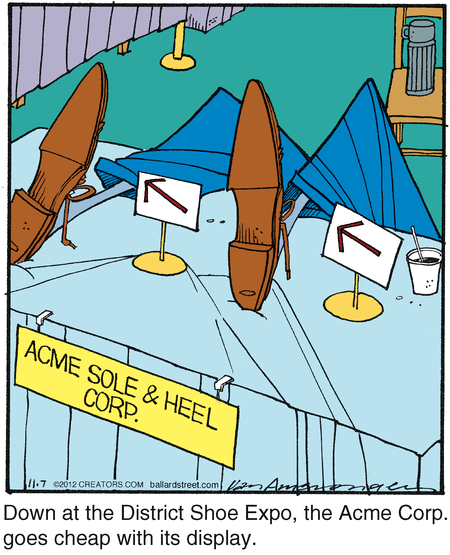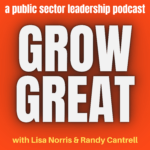Podcast: Play in new window | Download ()
Subscribe: Apple Podcasts | Spotify | RSS | More
 I’m not bashful to ask for the sale, or to encourage people to buy from me if I believe I’ve got just the thing to help them. But I am bashful to be presumptuous and I think you should be, too.
I’m not bashful to ask for the sale, or to encourage people to buy from me if I believe I’ve got just the thing to help them. But I am bashful to be presumptuous and I think you should be, too.
For years I sat at desks where I was responsible for the outcome of the business. The buck stops here and all that. I recall far too many salespeople entering my office to pitch me their products. “This is just what you need,” they’d say. Or words to that affect.
I had never met some of these people. They’d never visited the company I was running. They hadn’t talked with anybody inside the company. But in this first meeting, without asking a single question or doing any research, they knew just what we needed. No, they didn’t. They only knew they needed to sell something.
The professional services firm – whether it’s engineering, architecture, healthcare, legal services, accounting or anything else – is steeped in competence. Professional services firms have an expertise. They’re able to do things the rest of us can’t. So when we need their expertise, there is the tendency for them to think, “Your need for me is so obvious” that they forget the necessity to be more subtle in their marketing and sales approaches.
Subtle Ain’t Easy…For You, But It’s Way Easier For Your Prospects
Subtle doesn’t mean it’s not obvious. Subtle means it’s not in-your-face. It means it takes into consideration the prospect’s point of view. It’s the opposite of the traditional throat close. You know the one. It’s the one where the sales guy grabs you by the throat and urges you to buy. Now!
Subtle marketing for the professional services firm isn’t cheap. At least not in effort and time. But it’s crazy effective in cementing great relationships, in reducing the friction of the buying cycle and a host of other things that will make it worth your while.
Sometimes friction helps us in building our practices and our businesses. Permit me to use myself as an example. If you go to my coaching page you’ll see lots of copy. That copy is designed to address the pain points that I know exist with people who would be part of my target market. There are no buy buttons, but there are some buttons to click so prospects can go to an application. Click on that button and the prospect is taken to a page where they find my Bula Network Strategic Assessment. It’s an application designed to help me better understand the prospect’s problems. But it’s also designed to do something else.
It provides enough friction to serve as a bit of a sifter. People and organizations who are not my ideal client won’t complete that assessment. And that’s great. It saves them time. They see it and think, “No, I don’t want to do this.” Perfectly fine. Guess who I don’t really want to work with? That’s right, people who say, “No, I don’t really want to do this.” My best clients are those with a really high degree of willingness. They really want to make their businesses and organizations better!
It seems counter intuitive, but it works for your prospects. It’s a bit like the dating scene. If a guy is looking for the right girl, then he’s discriminating. Not just any girl will do. So how does he sort through all the potential girls? He has some specific qualities he’s looking for, and others he’s trying to avoid. Your practice is no different. You’re looking for certain clients who have specific needs, wants and desires. You’re likely trying to avoid some clients.
Subtle marketing is designed to let your ideal clients hire you with greater ease while simultaneously trying to politely repel the clients you don’t want (those who cost you money, who are more trouble than they’re worth, etc.).
It’s Not About Kicking Traditional Marketing To The Curb
Too many people seem ready to abandon what’s now called “traditional” marketing. Namely, advertising. Advertising still works. If it’s done properly. The problem with most advertising is there’s no call to action. We’re exposed to it and we don’t know what the advertiser wants from us.
Another problem with advertising is getting it in front of the right people. We TIVO or DVR our television programs so we can fast forward past the commercials. We don’t see the billboards any more because we’re texting or talking on the phone while we drive. Dangerous? You bet, but you see it every time you get in the car. It’s not easy to get your advertising in front of people any more because the sea is filled with more noise than ever! A louder bull horn just won’t work.
Professional services firms have long embraced direct mail advertising. I love direct marketing for many reasons, but mostly because we can make specific offers and target who gets our message. We may not be able to guarantee they open it, or read it, but we can at least be certain we put it in their hands…if only on the way to the trash can. The rest is up to us.
One major problem with the way I see professional services firms do direct mail is they all copy each other. Take the financial planning world. If you are over 55 you’re on the list. These folks love the dine and sell strategy. Invite you to a nice steak house, pitch you hard for an hour and put a hard close on you…in exchange for buying you and your spouse a steak dinner. They’ve been doing it for years because it’s a numbers game that works for them. I don’t hate it because of that. I hate it because it’s “me, too.” I hate it because the steak house is likely to be the reason for the choice. Not the financial planner’s expertise, compassion or like-ability.
Subtle marketing isn’t bait and switch. It’s not hiding the obvious. It’s honest, straight-forward and truthful. It’s designed to serve and help the prospect even if they don’t buy. The aim is to help build a relationship with prospects…your ideal prospects! It’s a slow burn that can result in a big bang of business success.
But You Gotta Put In The Work
You have to know who these people are and how they’re feeling. You can’t sucker punch them with a solution. That’s lazy marketing and it’s why so many professional services firms do it. It’s plug and play. Any moron can do it. No imagination required.
Creativity takes work. Lots of work. Subtle marketing puts in tons of heavy lifting up front knowing that the pay off will be enormous in happier clients, better referrals and higher ticket services. Those rewards demand greater efforts.
Let’s just do what they’re doing.”
That’s the common refrain of most professional services firms because it doesn’t require any work. I’m always somewhat surprised at how firms quickly jump to such activities without any consideration to the outcomes. I’m after results. That’s all I’m after. For me, results mean happy clients. Clients willing to refer me to others. Clients willing to tell others about a positive experience with me. I’m looking for long-term relationships with people who won’t hesitate to call me again. And again. I want to be irreplaceable. Not because I’m the smartest or most expert, but because I’m the most helpful, the most effective. The guy who produces results.
What do you want for your professional services firm?
If you’re like most, you want more clients. And you want to serve your clients better, more effectively. And more efficiently. I’ve not met many who didn’t want to stop going crazy in the process. It’s the 3 things that matter in business building.
Don’t be lazy. Get off your butt. Engage your brain. Make it easy for your prospects by putting in the work they deserve to make doing business with you remarkable.

 About the hosts: Randy Cantrell brings over 4 decades of experience as a business leader and organization builder. Lisa Norris brings almost 3 decades of experience in HR and all things "people." Their shared passion for leadership and developing high-performing cultures provoked them to focus the Grow Great podcast on city government leadership.
About the hosts: Randy Cantrell brings over 4 decades of experience as a business leader and organization builder. Lisa Norris brings almost 3 decades of experience in HR and all things "people." Their shared passion for leadership and developing high-performing cultures provoked them to focus the Grow Great podcast on city government leadership.
The work is about achieving unprecedented success through accelerated learning in helping leaders and executives "figure it out."